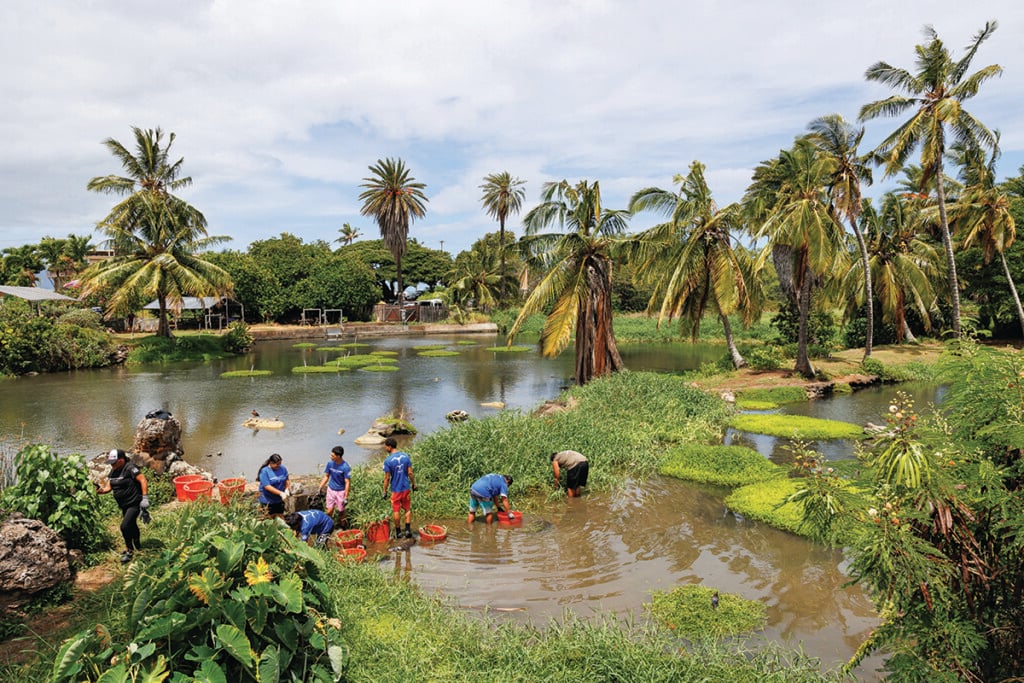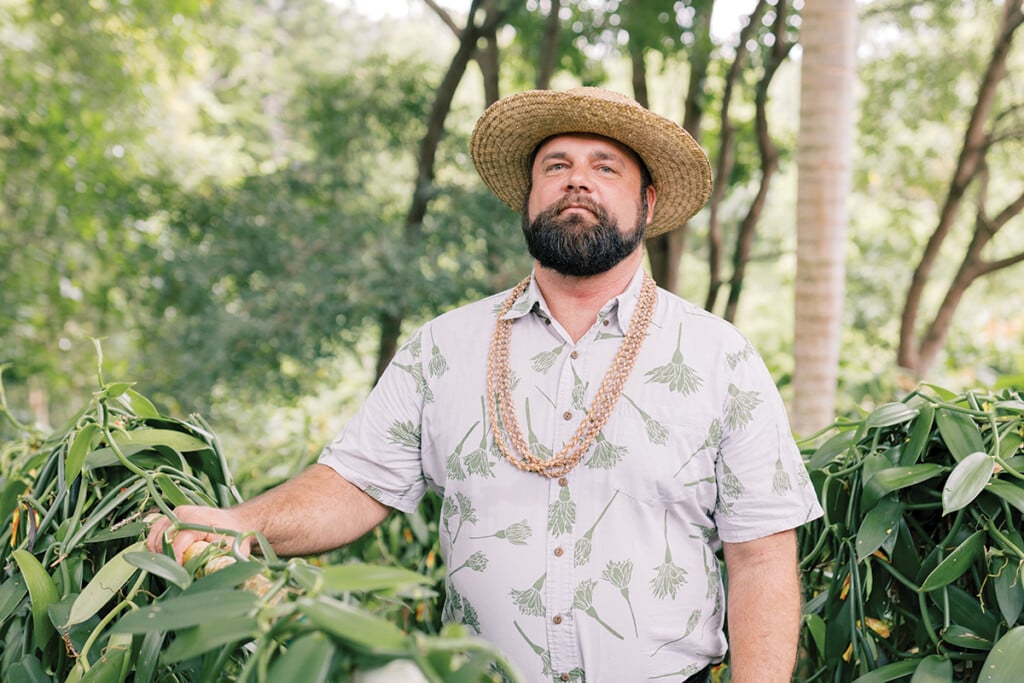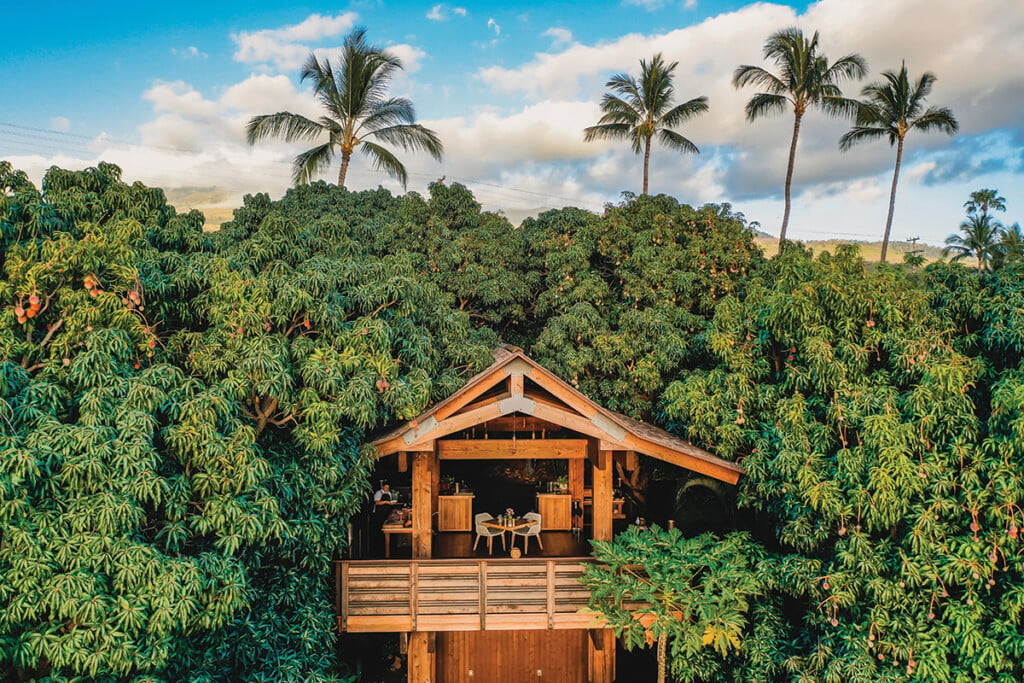Dive Deep into the Minds of Hawaiʻi’s Freedivers
With nothing but air in their lungs and an indestructible mental fortitude, Hawaiʻi freedivers do what most wouldn't even consider, and grow in the process.

There’s video footage of Daniel Koval, a Kona-based freediving instructor, plunging 335 feet into the sea. It’s an intoxicating sequence through the ocean’s many layers, and as Koval descends, the video shows the water’s slow transition from light blue to black.
Finally, he makes it to his desired depth. In the video, Koval has been underwater for a minute and 30 seconds and is being subjected to 10 additional units of atmospheric pressure compared to what he feels on the surface. And his lungs have shrunk to the size of golf balls. “It’s almost like dying and then being reborn again,” says Koval. “You have to give yourself to the sea and completely relax. Then you have to realize when you get down there that you do need to come back to the surface. It’s time to leave this extreme environment that you’ve just barely touched on … to survive.”

Holding your breath and swimming underwater is not a new or novel concept in the Islands. Spearfishers have been doing it for decades. However a niche subset of people known as freedivers, have split off from the pack. They’re focused entirely on one thing: holding their breath for as long as possible and diving as deep as they can without using oxygen tanks or special equipment. “Think about freediving as a form of extreme meditation,” says Koval, who holds the current U.S. freediving record of 335 feet in the constant weight division, where divers are not allowed to pull on guide ropes or discard weights to quicken their ascent. “You’re more in touch with yourself and you’re in a pretty extreme environment.”
Koval moved out of Orange County, California, and flew to Oʻahu on his 19th birthday, with just $1,000. Now 29, he’s an experienced freediving instructor—he’s a part of Freediving Instructors International, the first and only recreational freediving education agency in the U.S.—with over nine years of teaching under his belt. “It’s actually made me a better person and changed my life entirely,” says Koval, who came to the sport after working as a spearfisherman, selling his catches to restaurants in Chinatown. “In order for me to dive deeper, I had to get more in touch with myself, and deal with the things that were bothering me, whether it was a mental or physical stress in my life.”
Kurt Chambers, another Kona-based freediving instructor, has been competing since 2008. It was the difficulty of the sport that drew him in. “I appreciate the challenge; I’ve dabbled in quite a lot of sports ever since I was young,” he says. “But when I encountered breath holding and freediving, it was one of the greatest challenges I’ve ever faced.” Pushing the body to its limits is often the norm for freedivers like Chambers, who has broken multiple U.S. freediving depth records.

While freediving is a form of meditation to individuals like Koval and a way to test one’s physical abilities to others like Chambers, it’s also a competitive sport governed by the International Association for Development of Apnea, a record-keeping organization for freediving events. These contests are stages for the world’s best freedivers to show the results of their intense training. Participants compete in a variety of freediving disciplines, including the constant weight division; dynamic apnea with or without fins, where freedivers swim horizontally instead of vertically; and static apnea, where athletes remain still underwater and hold their breath for as long as possible.
Although Hawaiʻi has a high population of freedivers, as well as spearfishers, who use similar breath-holding techniques, almost all AIDA world records are held by international divers and swimmers. Hawaiʻi residents, however, hold multiple U.S. records and the Islands are often used as a training ground for freedivers from across the globe. Hawaiʻi Island, in particular, is regarded as one of the world’s best places to freedive, thanks to its protected bays and close-to-shore ocean drop-offs.
“Competitive freediving continues to be very small, nearly insignificant in the U.S.,” says Chambers, adding that many Hawaiʻi athletes end up having to travel internationally to compete in AIDA-sanctioned contests. “The sport is so underpublicized because we barely have any competitions here.” Because of that, Chambers has organized amateur competitions in Hawaiʻi, such as the annual Kona Depth Challenge. “It’s not easy to arrange the insurance and permitting, and I think that’s been an obstacle that has been around forever,” he says. Many of these permitting problems stem from freediving’s safety hazards, such as blackouts and drowning.

Competitive freediving, especially at the highest levels, requires a lot of training and practice. Both Koval and Chambers teach classes on Oʻahu, Maui, Kauaʻi and Hawaiʻi Island, and urge beginners to take entry-level courses. “When we hold our breath, we run into some physiological obstacles that manifest as extreme discomfort,” says Chambers. “That discomfort is something that we teach and elaborate about in our freediving classes, and in spite of this mental and physical obstacle of breath holding, our bodies can tolerate it.”
Once you feel comfortable freediving, and have found a buddy or partner to dive with, you’re ready to explore a realm where reefs teem with life, underwater caves welcome curious onlookers and sea arches stand tall yet invisible to those above sea level. Koval’s first dive through a kelp underworld in California was what got him hooked. “It was like swimming through an underwater forest,” says Koval. “It was this whole new world I could explore endlessly.”
Reality becomes distorted when you’re underwater. Noise is muted, motions are slower, your body seemingly weightless. The deeper you dive, the darker it gets. Sense of self is lost and, for a brief moment, you become one with the sea. It’s what freedivers live for, and these athletes will put their bodies under this intense physical and mental pressure to pursue this fleeting feeling over and over again. Are they crazy? Maybe. But freedivers are pushing the human body to its limits and will continue to expand their minds and psyches in the process, exploring the deep, dark unknown of their bodies and the ocean itself.


